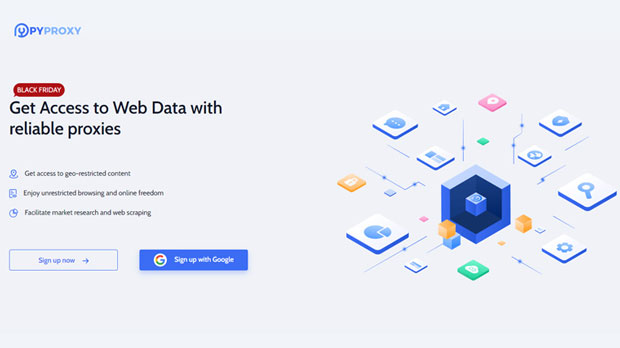In today's world, where businesses and individuals heavily rely on proxies for online anonymity, data scraping, or web crawling, the quality and reliability of proxy connections are critical. A key concern with datacenter proxies is their performance in different network environments, particularly wireless networks. Wireless networks, while providing convenience, are often associated with higher instability and fluctuations in connection strength. As a result, many users wonder whether Datacenter Proxies experience higher dropout rates in such settings. Understanding Datacenter Proxies and Wireless NetworksTo begin, it's essential to define what Datacenter Proxies are and how they function. Datacenter Proxies are IP addresses provided by data centers, as opposed to residential or mobile proxies, which are typically associated with individual households or mobile devices. These proxies are known for their speed and anonymity, making them ideal for activities such as web scraping, bypassing geo-restrictions, and managing large-scale SEO campaigns. Wireless networks, on the other hand, are internet connections provided through Wi-Fi, as opposed to wired connections like Ethernet. While wireless networks offer flexibility and mobility, they often come with limitations, including interference, signal range issues, and overall connection stability. These factors could potentially impact the performance of Datacenter Proxies.Factors Affecting Dropout Rates in Wireless NetworksSeveral factors influence the performance of both wireless networks and Datacenter Proxies. Understanding these factors is crucial in assessing the dropout rates in wireless environments.1. Signal InterferenceOne of the most common problems in wireless networks is signal interference. This interference can come from various sources, including physical obstructions (walls, furniture, etc.), other wireless devices, and even microwave ovens. These factors can cause fluctuations in the Wi-Fi signal strength, which in turn can lead to connection drops. When used on a wireless network with frequent signal interruptions, Datacenter Proxies may experience higher dropout rates due to the lack of consistent connectivity.2. Network CongestionWireless networks, particularly those in densely populated areas, are often subject to network congestion. As more devices connect to the same Wi-Fi network, the available bandwidth becomes limited, which can slow down the connection and cause packet loss. For users relying on Datacenter Proxies for activities that demand a stable and high-speed connection, network congestion can result in frequent disconnections, affecting the overall proxy performance.3. Distance from the RouterThe distance between the device using Datacenter Proxies and the Wi-Fi router plays a significant role in determining the connection stability. The farther the device is from the router, the weaker the signal will be, leading to higher dropout rates. This can be particularly problematic for users who are working in large spaces or on the move, as their device may struggle to maintain a stable connection with the router.4. Wireless Protocols and StandardsDifferent wireless protocols, such as Wi-Fi 4 (802.11n), Wi-Fi 5 (802.11ac), and Wi-Fi 6 (802.11ax), offer varying levels of performance. Older protocols like Wi-Fi 4 are more prone to interference and have lower bandwidth capabilities, leading to a higher likelihood of dropout. On the other hand, newer protocols like Wi-Fi 6 provide faster speeds and better handling of network congestion, reducing the chances of dropout for users relying on Datacenter Proxies.Datacenter Proxies and Wireless Network ReliabilityWhile wireless networks have inherent limitations, the impact on Datacenter Proxies largely depends on the specific use case and the quality of the network. For example, users who require high-speed, low-latency connections for tasks like data scraping or streaming may experience noticeable issues when using Datacenter Proxies over an unstable wireless connection. However, for users who are engaging in less intensive tasks, such as browsing or managing a small-scale SEO campaign, the dropout rates may not be as significant.1. Impact on High-Demand ActivitiesFor high-demand activities that require consistent and fast connections, such as web scraping large volumes of data or running automated SEO bots, any fluctuation in network performance can result in significant issues. Datacenter Proxies are often used in these scenarios, and if the wireless network is unstable, users may experience timeouts, failures to retrieve data, or inaccurate results due to the proxy disconnecting during critical moments.2. Impact on Low-Demand ActivitiesOn the other hand, for low-demand tasks that do not require constant or high-speed connections, such as casual browsing or managing a few online accounts, the dropout rates may not be as problematic. Even if the connection drops occasionally, the impact on the overall performance of Datacenter Proxies might not be as severe. In these cases, users may tolerate brief interruptions without noticing significant consequences.Ways to Minimize Dropout Rates in Wireless NetworksWhile wireless networks do present challenges for users of Datacenter Proxies, there are several strategies that can help mitigate the impact of dropout rates.1. Improve Signal StrengthTo minimize signal interference and improve connection stability, users can reposition their router, avoid obstructions, and reduce the number of devices connected to the network. Additionally, using Wi-Fi extenders or mesh networks can help boost the signal in larger spaces, ensuring a more stable connection for Datacenter Proxies.2. Opt for Wired ConnectionsWhenever possible, users should consider using wired Ethernet connections instead of relying on Wi-Fi. Wired connections are much more stable and offer lower latency, which can significantly improve the performance of Datacenter Proxies. This is especially beneficial for high-demand activities that require a consistent and reliable connection.3. Upgrade to Better Wireless ProtocolsUpgrading to modern wireless protocols, such as Wi-Fi 5 or Wi-Fi 6, can significantly reduce the likelihood of dropout rates in wireless networks. These newer protocols offer improved bandwidth, faster speeds, and better resistance to interference, all of which contribute to a more stable connection for Datacenter Proxies.4. Use Proxy RotationUsing proxy rotation strategies can help minimize the impact of connection drops. By rotating between multiple Datacenter Proxies, users can avoid prolonged downtime caused by a single proxy disconnecting. This strategy is particularly useful for large-scale data scraping or when running numerous automated tasks that require consistent connectivity.In conclusion, Datacenter Proxies can experience higher dropout rates when used over wireless networks, primarily due to factors like signal interference, network congestion, and the distance from the router. However, the severity of these dropout rates largely depends on the type of activities being conducted and the quality of the wireless network. By improving signal strength, opting for wired connections, upgrading to newer wireless protocols, and using proxy rotation strategies, users can minimize the impact of dropout rates and ensure a more stable and reliable connection for their Datacenter Proxies.
Sep 05, 2025

































































